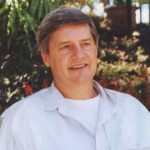Yoga Alliance Clarifies Distinction from Yoga Therapy
March 11, 2016
by John Weeks, Publisher/Editor of The Integrator Blog News and Reports
With an issued a statement last month, the Yoga Alliance sent a bombshell into the middle of the booming yoga field and drew a smart line distinguishing yoga teachers from the growing use of distinctions including “yoga therapy” and “yoga therapists.” The move came as a result of advocacy efforts targeted to reduce state regulation directed at yoga teacher training programs. The Yoga Alliance – registering yoga teachers and yoga teacher training programs – pulled the fuse. An apparent target, though not directly mentioned by the Yoga Alliance, was an entity that was a closely connected sister organization until 10 years ago, the International Association of Yoga Therapists (IAYT). The yoga industry worth was estimated to be $27-billion in 2013, with more than 36-million practitioners today. According to some estimates, the total number of those who teach yoga in the United States may be as many as a quarter of a million, of which more than 72,000 are registered with the Yoga Alliance. In the meantime, tens of thousands of individuals and multiple medical delivery organizations, including the Veteran’s Administration, are intensifying their interest in yoga therapy, which is yoga as an applied health care treatment, typically for specific conditions. The IAYT has steadily embraced the work of creating an elaborate self-regulatory structure to midwife this new health care profession of yoga therapists into being. The Irish poet William Butler Yeats once called the act of writing a poem “bringing the balloon of the mind into its narrow shed.” Just so, over the last decade, the IAYT’s elaborate public processes corralled the healer-egos of multiple diverse yoga therapy lineages into the basic frameworks of a modern yoga therapy profession.
The move came as a result of advocacy efforts targeted to reduce state regulation directed at yoga teacher training programs. The Yoga Alliance – registering yoga teachers and yoga teacher training programs – pulled the fuse. An apparent target, though not directly mentioned by the Yoga Alliance, was an entity that was a closely connected sister organization until 10 years ago, the International Association of Yoga Therapists (IAYT). The yoga industry worth was estimated to be $27-billion in 2013, with more than 36-million practitioners today. According to some estimates, the total number of those who teach yoga in the United States may be as many as a quarter of a million, of which more than 72,000 are registered with the Yoga Alliance. In the meantime, tens of thousands of individuals and multiple medical delivery organizations, including the Veteran’s Administration, are intensifying their interest in yoga therapy, which is yoga as an applied health care treatment, typically for specific conditions. The IAYT has steadily embraced the work of creating an elaborate self-regulatory structure to midwife this new health care profession of yoga therapists into being. The Irish poet William Butler Yeats once called the act of writing a poem “bringing the balloon of the mind into its narrow shed.” Just so, over the last decade, the IAYT’s elaborate public processes corralled the healer-egos of multiple diverse yoga therapy lineages into the basic frameworks of a modern yoga therapy profession.  The therapist group, led by executive director John Kepner (pictured left), developed a council of yoga therapy schools, an accrediting agency, and draft standards of practice. Most recently, following a conscientious public process that is the hallmark of their work, they sent out a draft Code of Ethics for public comment. All of these steps might seem to have placed the field of yoga therapy on the brink of formal requests for state regulation or licensing. However, this isn’t the path of the IAYT. As John Kepner has shared, it is seeking to pursue a “third way” for the profession. Rather than being either a chaotically-defined alternative medicine discipline with no standard, or a field with full-on state regulation, the IAYT has sought a course of powerful self-regulation instead. A move toward licensing would only come if the yoga therapy field called for it. And so far no one has. Nor have legislators demanded it. In recent years, legislators have leaned away from regulating new fields, especially when the risk of harm is low. No one seemed to be calling the regulation into question, as it turned out, until a recent campaign from the Yoga Alliance. Now, some state regulators have begun to consider the regulation of yoga schools. These schools, some of which are large, multi-location businesses, are among the Alliance’s member registrants. Shouldn’t they be required to be state-certified like any other vocational education program? A celebrated example of explored regulation was New York as far back at 2009. To protect its schools from the costs of formal regulation, the Yoga Alliance is “engag(ing) in state level advocacy … to reduce state regulation targeted at yoga teacher training programs.”
The therapist group, led by executive director John Kepner (pictured left), developed a council of yoga therapy schools, an accrediting agency, and draft standards of practice. Most recently, following a conscientious public process that is the hallmark of their work, they sent out a draft Code of Ethics for public comment. All of these steps might seem to have placed the field of yoga therapy on the brink of formal requests for state regulation or licensing. However, this isn’t the path of the IAYT. As John Kepner has shared, it is seeking to pursue a “third way” for the profession. Rather than being either a chaotically-defined alternative medicine discipline with no standard, or a field with full-on state regulation, the IAYT has sought a course of powerful self-regulation instead. A move toward licensing would only come if the yoga therapy field called for it. And so far no one has. Nor have legislators demanded it. In recent years, legislators have leaned away from regulating new fields, especially when the risk of harm is low. No one seemed to be calling the regulation into question, as it turned out, until a recent campaign from the Yoga Alliance. Now, some state regulators have begun to consider the regulation of yoga schools. These schools, some of which are large, multi-location businesses, are among the Alliance’s member registrants. Shouldn’t they be required to be state-certified like any other vocational education program? A celebrated example of explored regulation was New York as far back at 2009. To protect its schools from the costs of formal regulation, the Yoga Alliance is “engag(ing) in state level advocacy … to reduce state regulation targeted at yoga teacher training programs.”  In a notice to its members, accompanied by a video from the Yoga Alliance’s communications lead Andrew Tanner (pictured right), the organization reported to have found that “some of the push to regulate yoga [schools] came from the government’s interest in protecting the public who may get treatment from yoga therapists.”
In a notice to its members, accompanied by a video from the Yoga Alliance’s communications lead Andrew Tanner (pictured right), the organization reported to have found that “some of the push to regulate yoga [schools] came from the government’s interest in protecting the public who may get treatment from yoga therapists.”  Learning this, the Yoga Alliance decided to set up a firewall between “yoga teachers” – their registrants - and “yoga therapists,” the IAYT’s field. The Yoga Alliance contracted with attorney Kristi Kung (pictured left), with the Washington, D.C. firm of Pillsbury Winthrop Shaw and Pittman. Kung’s “Assessing the Legal Risk of Unregulated Yoga Therapy” provided the necessary gun-powder. Despite the lack of evidence from legislators seeking to force regulation on the yoga therapy field, Kung raised the specter of significant impending harm: “As yoga [therapy] bleeds into the regulatory world of health care … the freedom of choice Yogi’s have may become obsolete.” Another similar assertion in the opinion could breed hysteria: “The teaching and practice of yoga therapy … threatens the entire yoga community with being swept under a regulatory scheme.” The picture created was one of therapists damaging teachers. The organization highlighted a link to Kung’s incendiary perspective in a mailing to members. The stance of the Yoga Alliance and the publication of Kung’s perspective took most of the field by surprise. Kepner sent IAYT members a note indicating that “we were as surprised as everyone else to learn that the Yoga Alliance (YA) had a formal organization position on yoga therapy.” Attached to Kepner’s response to his members was a separate legal opinion by IAYT consultant Dan Seitz, JD, EdD. Seitz took the position that, if and when regulation becomes necessary, the IAYT’s self-regulatory work is positioning the field to be ready. Despite the less than optimal communication, the general direction of the Yoga Alliance makes sense. Kepner said as much in his public response to the Yoga Alliance’s surprising move: “Upon reflection, however, it makes sense for the YA to distinguish what they do from what IAYT does, since neither [the] YA's standards nor their mission are designed to support yoga therapy as an emerging field distinct from yoga.” The Yoga Alliance laid down rules with its registrations to achieve this clarity. By October 1, 2016, none of the teachers and schools registered on the Yoga Alliance site can use therapist language or a number of other terms considered to be healthcare-focused, in their listing. (Among these, notably, is “integrative health.”) To help registrants re-draft their self-descriptions, the Yoga Alliance offered a list of other approved words and phrases. The only way an individual or college can speak of what it does as “therapy” is with direct reference to the school or process through which one was educated or is recognized. The bottom line is good public health. No one is to let the public assume that registry with the Yoga Alliance is sufficient to provide therapy. Making these distinctions is a sign of maturation for the yoga field and each of its branches. Additional good news is that a useful piece of public awareness work is being clarified and, sources say, damage control surrounding the way in which this was rolled out is bringing leaders of the two sibling organizations into productive dialogue.
Learning this, the Yoga Alliance decided to set up a firewall between “yoga teachers” – their registrants - and “yoga therapists,” the IAYT’s field. The Yoga Alliance contracted with attorney Kristi Kung (pictured left), with the Washington, D.C. firm of Pillsbury Winthrop Shaw and Pittman. Kung’s “Assessing the Legal Risk of Unregulated Yoga Therapy” provided the necessary gun-powder. Despite the lack of evidence from legislators seeking to force regulation on the yoga therapy field, Kung raised the specter of significant impending harm: “As yoga [therapy] bleeds into the regulatory world of health care … the freedom of choice Yogi’s have may become obsolete.” Another similar assertion in the opinion could breed hysteria: “The teaching and practice of yoga therapy … threatens the entire yoga community with being swept under a regulatory scheme.” The picture created was one of therapists damaging teachers. The organization highlighted a link to Kung’s incendiary perspective in a mailing to members. The stance of the Yoga Alliance and the publication of Kung’s perspective took most of the field by surprise. Kepner sent IAYT members a note indicating that “we were as surprised as everyone else to learn that the Yoga Alliance (YA) had a formal organization position on yoga therapy.” Attached to Kepner’s response to his members was a separate legal opinion by IAYT consultant Dan Seitz, JD, EdD. Seitz took the position that, if and when regulation becomes necessary, the IAYT’s self-regulatory work is positioning the field to be ready. Despite the less than optimal communication, the general direction of the Yoga Alliance makes sense. Kepner said as much in his public response to the Yoga Alliance’s surprising move: “Upon reflection, however, it makes sense for the YA to distinguish what they do from what IAYT does, since neither [the] YA's standards nor their mission are designed to support yoga therapy as an emerging field distinct from yoga.” The Yoga Alliance laid down rules with its registrations to achieve this clarity. By October 1, 2016, none of the teachers and schools registered on the Yoga Alliance site can use therapist language or a number of other terms considered to be healthcare-focused, in their listing. (Among these, notably, is “integrative health.”) To help registrants re-draft their self-descriptions, the Yoga Alliance offered a list of other approved words and phrases. The only way an individual or college can speak of what it does as “therapy” is with direct reference to the school or process through which one was educated or is recognized. The bottom line is good public health. No one is to let the public assume that registry with the Yoga Alliance is sufficient to provide therapy. Making these distinctions is a sign of maturation for the yoga field and each of its branches. Additional good news is that a useful piece of public awareness work is being clarified and, sources say, damage control surrounding the way in which this was rolled out is bringing leaders of the two sibling organizations into productive dialogue.



















SHARE